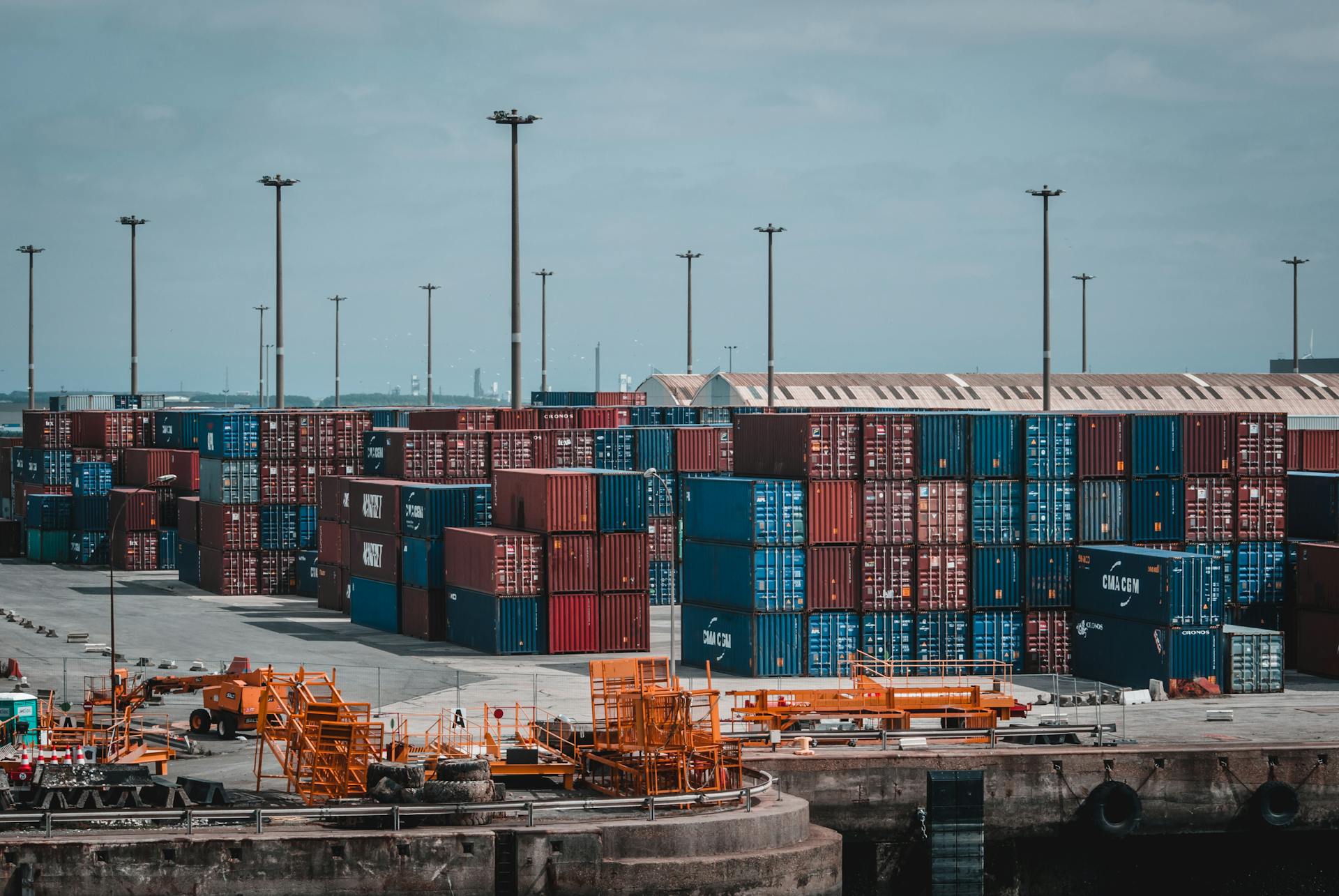
Port to door shipping is a logistics service that involves transporting goods from the port of entry to the final destination, often a customer's doorstep. This type of shipping is crucial for e-commerce businesses, which rely on fast and reliable delivery to stay competitive.
The port to door shipping process typically involves a series of handoffs between different carriers, each responsible for a specific leg of the journey. This can lead to delays and added costs, making it essential to choose a reliable shipping partner.
In the US, for example, the port to door shipping process often involves the use of multiple carriers, including ocean freighters, trucking companies, and last-mile delivery services. This complex network requires careful coordination to ensure smooth and efficient delivery.
What is Port to Door Shipping
Port to door shipping is a coordinated effort that involves various transportation modes, including ocean freight, air freight, rail, and trucking, to deliver goods to their intended recipients.
This method offers end-to-end visibility and control over the entire shipping process, from start to finish.
Unlike traditional shipping methods, port to door shipping minimizes the risk of delays or disruptions by navigating complex customs regulations and optimizing transportation routes.
Businesses can benefit from a streamlined logistics experience with port to door shipping, which reduces transit times and enhances visibility into shipment status.
By partnering with experienced freight forwarders and logistics providers, businesses can improve operational efficiency and customer satisfaction.
Importance and Benefits
Port to door shipping offers a range of benefits that can make a significant impact on businesses and customers alike. One of the key advantages is efficiency, which is achieved by consolidating transportation and logistics services into a single solution.
This streamlines the shipping process, reducing administrative overhead and minimizing transit times. By doing so, businesses can operate more efficiently and stay ahead of the competition.
Reliability is another crucial aspect of port to door shipping. With end-to-end visibility and tracking capabilities, businesses can monitor shipment status and location in real-time, enabling them to proactively address any issues or delays that may arise during transit.

This level of transparency enhances reliability and helps businesses maintain a high level of customer satisfaction. Customers benefit from faster delivery times, reduced hassle, and increased convenience, leading to higher levels of satisfaction and loyalty.
Port to door shipping can also be cost-effective for businesses, especially when compared to traditional shipping methods. By consolidating services and negotiating favorable rates with carriers and logistics providers, businesses can minimize costs associated with warehousing, inventory management, and transportation.
Here are some of the key benefits of port to door shipping:
- Efficiency: Streamlined shipping process, reduced administrative overhead, and minimized transit times.
- Reliability: End-to-end visibility and tracking capabilities, enabling proactive issue resolution.
- Customer Satisfaction: Faster delivery times, reduced hassle, and increased convenience.
- Cost-Effectiveness: Minimized costs associated with warehousing, inventory management, and transportation.
By leveraging these benefits, businesses can gain a competitive edge and meet the demands of today's global marketplace.
Logistics and Delivery
Port to door shipping offers a complex shipping experience that can be simplified with careful planning and execution. This approach can help businesses ensure a smooth and successful shipping experience.
Careful planning is key to navigating port to door shipping effectively. By doing so, businesses can avoid common pitfalls and ensure timely delivery of goods.
Port to door shipping enables businesses to expand their reach beyond domestic borders and tap into new opportunities for growth and expansion. Businesses can reach customers in remote or hard-to-reach areas and penetrate new markets.
Three Elements of Effective Logistics

Effective logistics is crucial for a smooth and successful shipping experience. A good customs broker is critical to securing ISF and customs clearance bonds and ensuring the timely transmission of detailed customs documentation.
Customs clearance can be a complex process, but it can be streamlined through digital platforms, reducing errors and expediting the entire customs process. This precision is vital in averting delays and ensuring cargo moves swiftly from port to door.
The less you handle cargo, the better. A straight delivery from the port to the consignee is preferred, but in some circumstances, your cargo may require transload services near the port. Transloading can be necessary when shipping multiple containers through a state with a low maximum truck weight limit, or when the receiving facility lacks dock doors.
Here are some scenarios where transloading may be needed:
- When shipping multiple containers through a state with a low maximum truck weight limit, such as California.
- When the receiving facility lacks dock doors and can’t unload an ocean container.
Having a solid solution for transporting goods from the port to the final destination is essential. This requires reliable trucking partners and a forwarder who can navigate details on your behalf, such as dealing with rail terminal constraints.

A seasoned forwarder can mitigate costly detention and demurrage penalties and navigate complex needs, such as oversized or overweight shipments. They have the expertise and connections for heavy hauling and navigating legal highway limits with specialized equipment.
For businesses importing into multiple U.S. ports, working with one forwarder for services across multiple ports can simplify the administrative load and save time.
Delays and Logistics Issues
Delays and logistics issues are common challenges faced by businesses in port to door shipping, arising from factors such as congestion at ports, capacity constraints, labor strikes, or equipment failures.
Congestion at ports is a major contributor to delays, causing ships to wait for extended periods before they can unload their cargo.
Capacity constraints can also lead to delays, as carriers and logistics providers struggle to keep up with demand.
Labor strikes can bring entire operations to a standstill, causing significant delays and disruptions.
Equipment failures can also cause delays, especially if they occur at critical points in the supply chain.
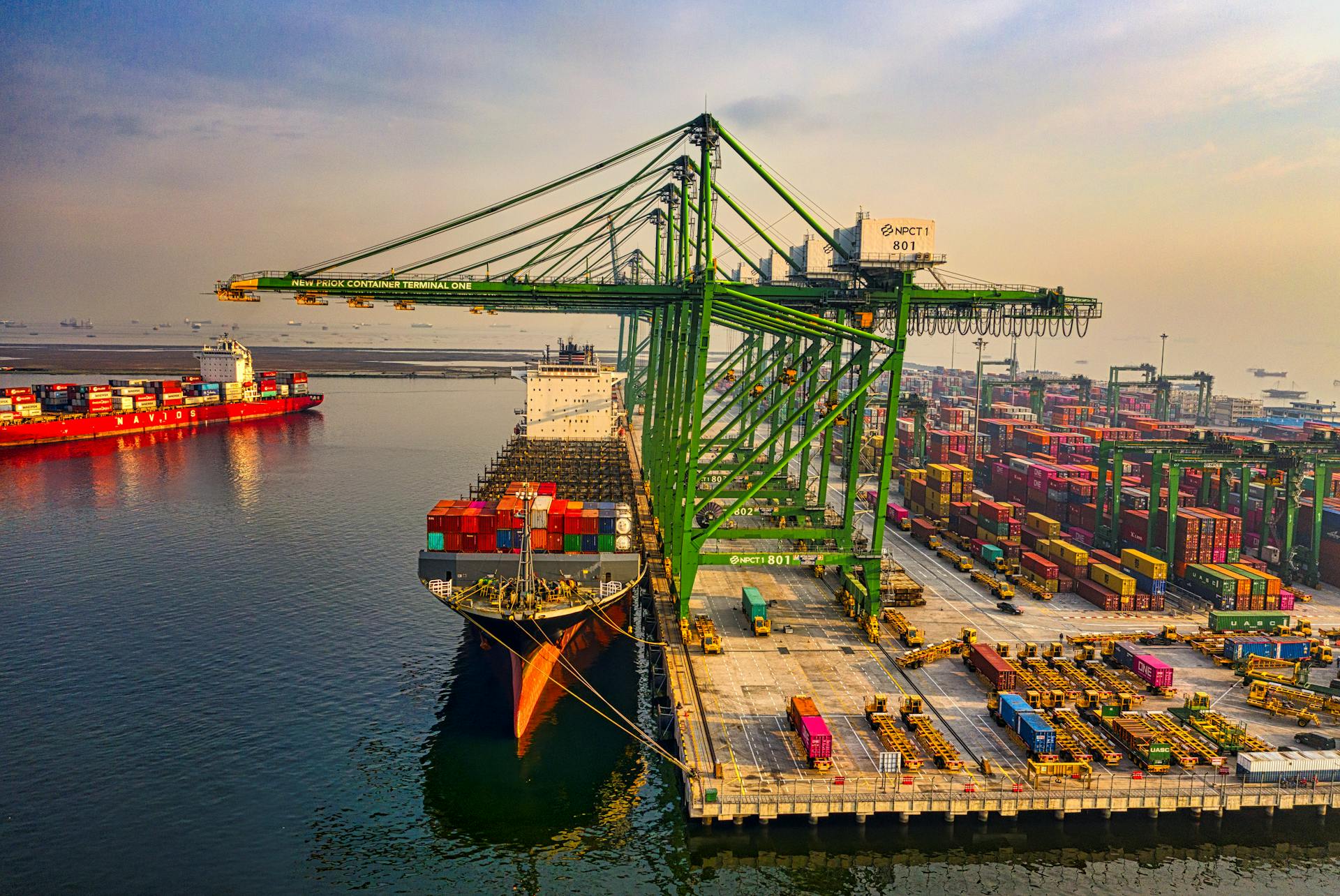
To address these issues, businesses must adopt proactive measures to anticipate and mitigate potential disruptions.
Diversifying transportation routes and modes can help businesses avoid single points of failure and reduce their reliance on a single carrier or logistics provider.
Maintaining open lines of communication with carriers and logistics providers is also crucial, allowing businesses to stay informed about potential issues and respond quickly to disruptions.
Implementing contingency plans can help businesses manage unforeseen events effectively and minimize the impact of delays on their operations.
Leveraging advanced technologies such as predictive analytics and real-time tracking can also help businesses identify and address issues before they escalate into major disruptions.
Key Players and Services
Key players in port to door shipping include freight forwarders, shipping companies, and transportation providers. They work together to ensure the seamless movement of goods.
Freight forwarders play a central role in port to door shipping by coordinating logistics and transportation on behalf of businesses. They handle documentation, customs clearance, carrier selection, and shipment tracking.
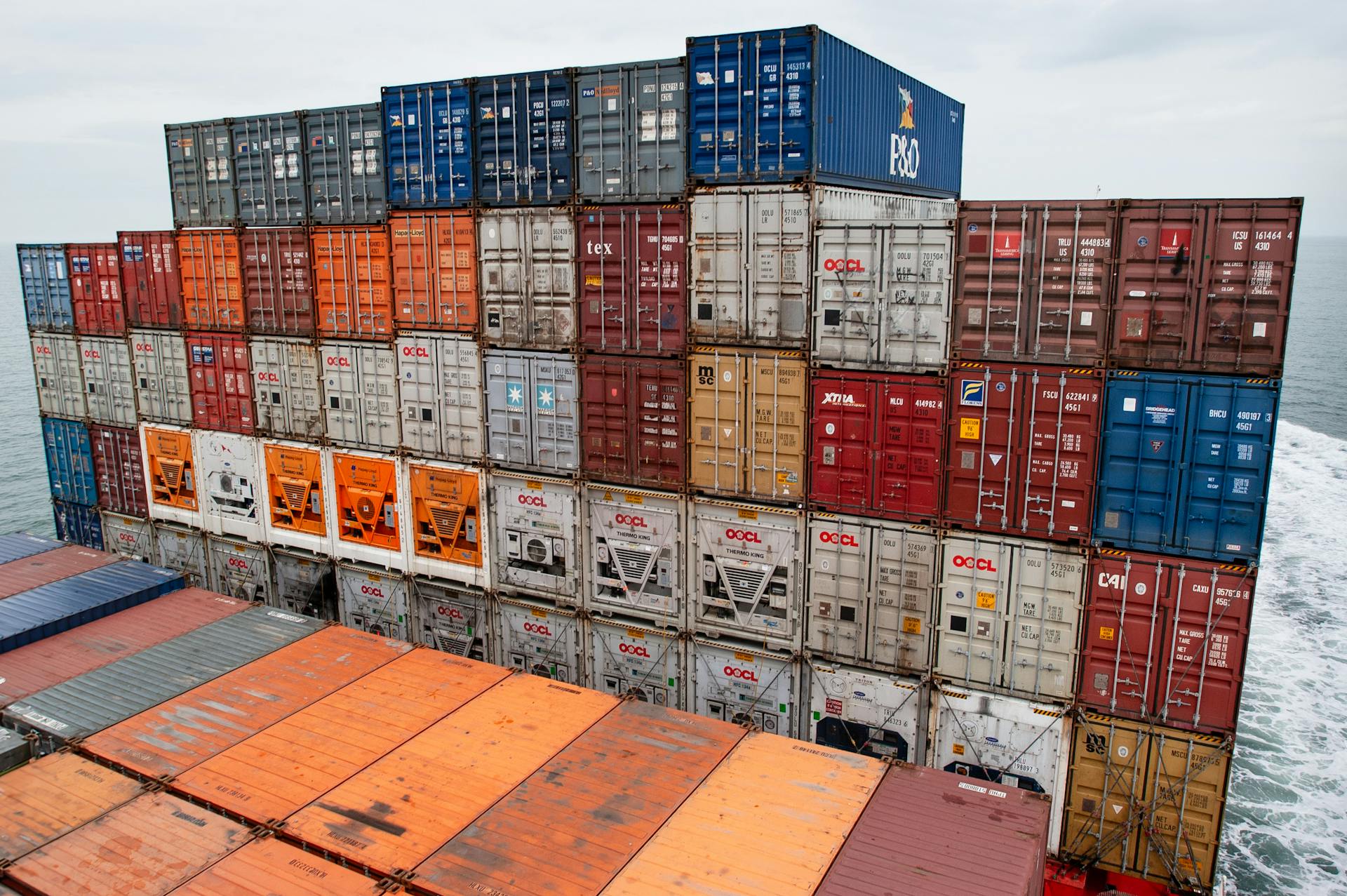
Freight forwarders leverage their expertise and network to optimize routes, minimize costs, and ensure timely delivery. They act as a single point of contact for businesses, providing end-to-end logistics solutions and personalized customer service.
I.C.E. Transport offers a reliable landside solution to avoid delays and penalties. They can handle landside shipping requirements at every major U.S. port.
Freight Forwarders
Freight forwarders play a central role in port to door shipping by coordinating the logistics and transportation of goods on behalf of businesses.
They act as facilitators, handling all aspects of the shipping process, including documentation, customs clearance, carrier selection, and shipment tracking.
Freight forwarders leverage their expertise and network of carriers and logistics partners to optimize transportation routes, minimize costs, and ensure timely delivery of goods to their final destination.
They act as a single point of contact for businesses, providing end-to-end logistics solutions and personalized customer service throughout the shipping process.
Freight forwarders handle all aspects of the shipping process, making them a crucial part of international shipping.
Their expertise and network of carriers and logistics partners allow them to provide efficient and cost-effective solutions for businesses.
Transportation Providers
Transportation providers play a crucial role in the final leg of the shipping process, delivering goods directly to customers and ensuring a positive delivery experience.
They operate a fleet of vehicles and employ skilled drivers and delivery personnel to handle the transportation and delivery of goods. These providers offer a range of transportation services, including trucking, rail, and courier services.
Transportation providers leverage technology and route optimization tools to streamline delivery operations, minimize transit times, and maximize efficiency. This helps to ensure timely and reliable delivery of goods to their final destination.
Documentation and Tracking
Proper documentation is essential for a smooth port to door shipping experience. Ensure all required paperwork is accurate, complete, and compliant with import/export regulations.
Commercial invoices, packing lists, certificates of origin, and customs declarations are just a few of the documents you'll need to prepare. Work closely with your freight forwarder or customs broker to navigate customs procedures.

Effective communication and tracking are also crucial to managing port to door shipments successfully. Regularly communicate with your service provider to provide updates on shipment status and address any issues that may arise.
Utilize tracking and monitoring tools provided by your service provider to keep tabs on your shipments in real-time.
Proper Documentation
Proper documentation is key to a smooth port to door shipping experience. Ensure that all required paperwork, including commercial invoices, is accurate and complete.
Commercial invoices, for instance, need to include details such as the seller's and buyer's names and addresses, a description of the goods, and their value. This information is crucial for customs clearance.
Packing lists are also essential, as they help ensure that all items are accounted for and match the commercial invoice. This reduces the risk of lost or damaged goods.
Customs declarations, which include information about the goods and the shipper, must be completed accurately to avoid delays.
Communication and Tracking
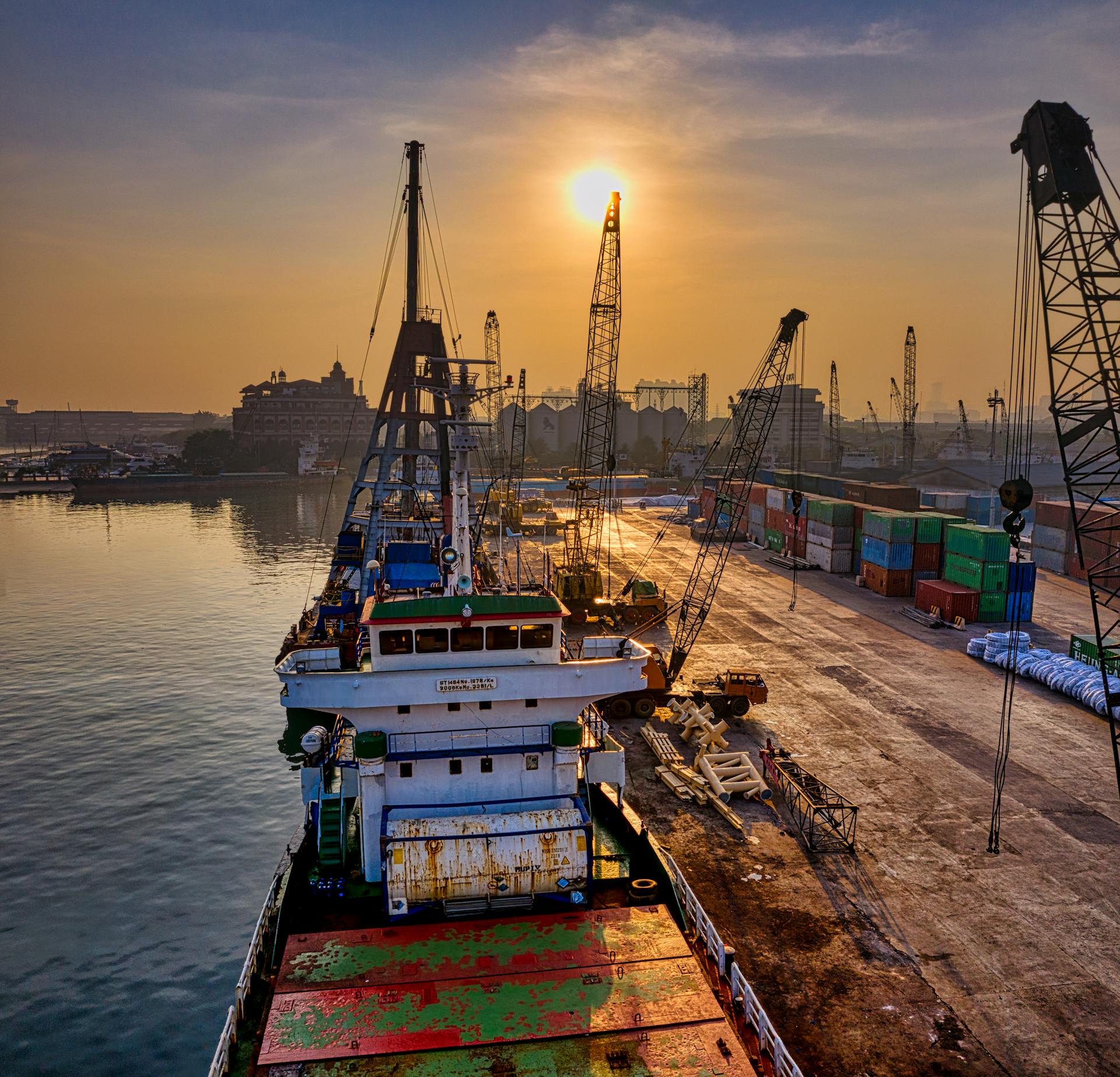
Effective communication is key to managing shipments successfully. Maintain open lines of communication with your service provider throughout the shipping process.
Regularly communicate with your provider to provide updates on shipment status and address any issues or concerns. This will ensure timely resolution of any problems that may arise.
Utilize tracking and monitoring tools provided by your service provider to keep tabs on your shipments in real-time. This allows you to track shipments from the port of origin to the final destination.
Proactively address any delays or logistics issues that may occur during transit by staying informed. Regular tracking will help you identify potential problems before they become major issues.
Challenges in
Port to door shipping is a complex process that comes with its fair share of challenges. One of the biggest hurdles is navigating complex customs and regulations, which can vary greatly from country to country.
Transportation risks are another significant challenge in port to door shipping. These risks include damage, loss, and theft of goods, and can be caused by adverse weather conditions, accidents, or pilferage.
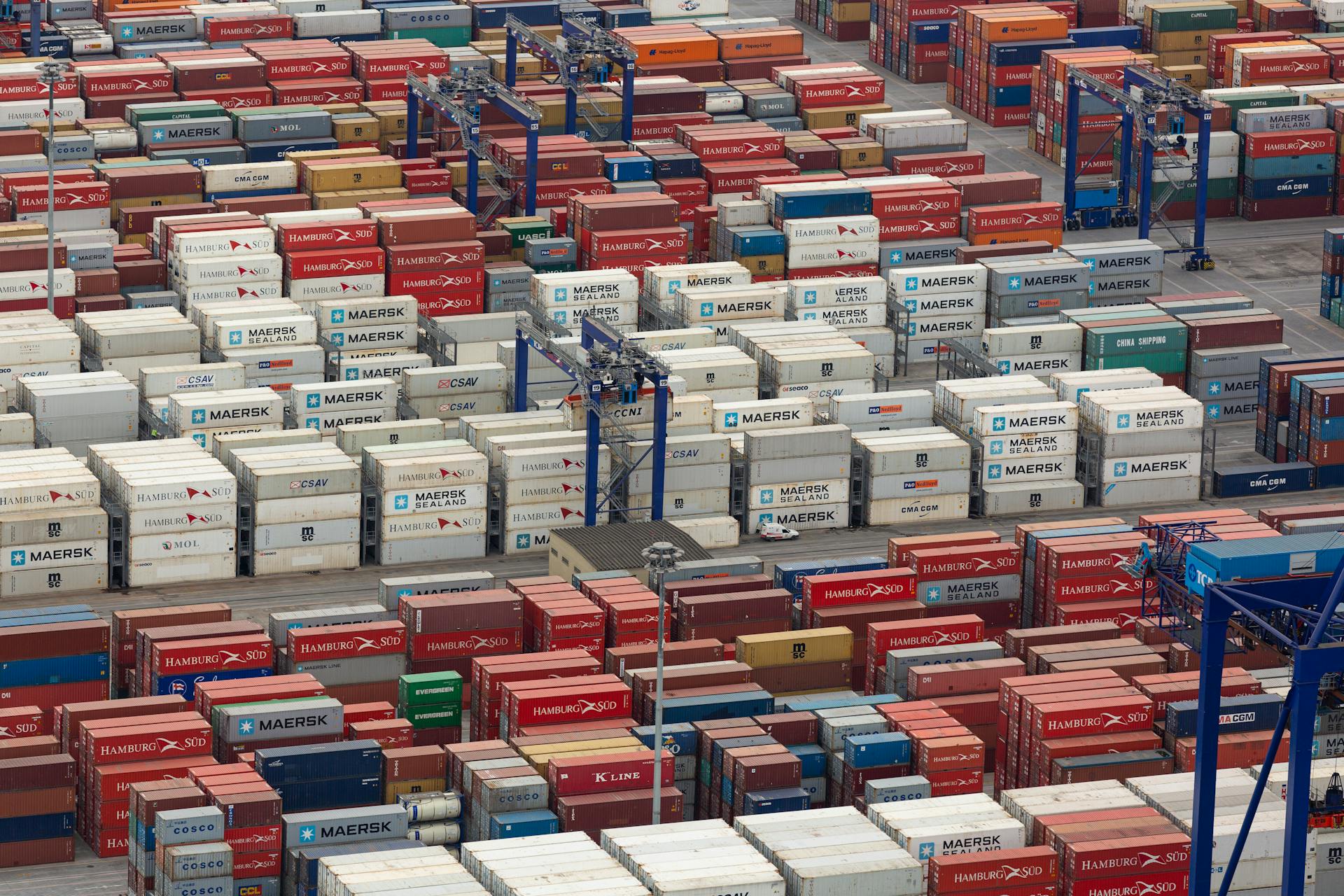
Businesses must take proactive steps to mitigate these risks, such as selecting reliable carriers and logistics partners, using secure packaging and handling procedures, and implementing tracking and monitoring systems.
Customs procedures and regulations can be a major obstacle in port to door shipping. Failure to comply can result in delays, fines, or even seizure of goods.
To ensure smooth customs clearance, businesses must provide proper documentation, including commercial invoices, packing lists, and certificates of origin.
Future Trends
Port to door shipping is on the cusp of significant transformations, driven by technological innovations and a growing emphasis on sustainable practices.
Advanced technologies like AI, IoT, and blockchain are poised to play a central role in shaping the future of port to door shipping.
AI-powered solutions can optimize route planning, predict demand, and automate processes, reducing costs and improving the accuracy and reliability of shipments.
Real-time visibility into the location, condition, and status of goods is now possible with IoT devices like sensors and RFID tags.
Blockchain technology offers secure and transparent tracking of goods, reducing the risk of fraud and ensuring data integrity across the supply chain.
By leveraging these technological innovations, businesses can optimize port to door shipping operations, reduce transit times, and enhance the overall customer experience.
Incoterms and Movement Types
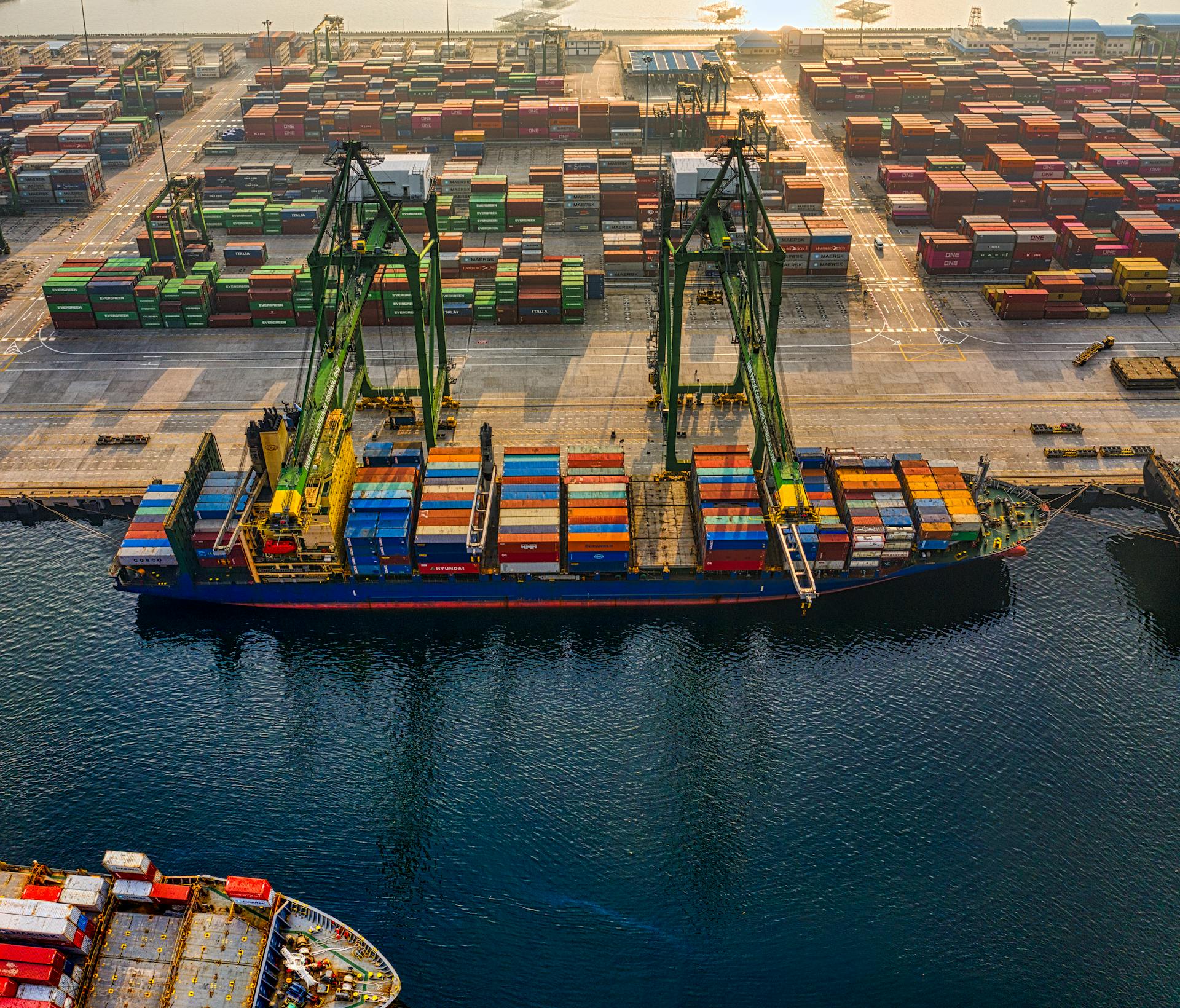
The port-to-door movement type is a convenient option for exporters and importers alike, allowing for a smooth and efficient delivery process. It's essential to know which Incoterms to use for this movement type to avoid any confusion or miscommunication.
Incoterms that work well with the port-to-door movement type include CPT (Carriage Paid To) and DDP (Delivery Duty Paid). These Incoterms ensure the seller is responsible for delivering the goods to the buyer's premises.
Using CPT, the seller must make the goods available at the buyer's chosen location. This means the seller's job is done once the goods are at the buyer's doorstep.
DDP, on the other hand, requires the seller to deliver the goods to the buyer's warehouse or premises, including any duties or taxes. This Incoterm provides an added layer of convenience for the buyer.
The right Incoterm can make a big difference in the shipping process, so it's crucial to choose the one that best suits your needs.
Industry and News
Shipping disruptions can be a major headache, especially if you're relying on a specific route. A nearby bridge collapse in Baltimore has caused major disruptions to shipping routes to and from the city.
Be mindful of the fact that shipping expert tips and recommendations are available to help navigate these disruptions. These tips can help minimize the impact on your business.
Major disruptions like this one can have a ripple effect on the entire supply chain. Shipping routes to and from Baltimore are being affected, so it's essential to explore alternative options.
Shipping expert tips and recommendations can help you stay ahead of the game. Explore these tips to ensure your shipping operations run smoothly.
Some shipping routes may be closed or restricted due to the bridge collapse. It's crucial to check the latest updates before planning your shipping schedule.
Shipping disruptions can be unpredictable, but having a plan in place can help mitigate the impact. Shipping expert tips and recommendations can provide valuable insights to help you prepare for unexpected disruptions.
Frequently Asked Questions
What is D2D shipping terms?
D2D shipping involves collecting freight from the sender's door and delivering it directly to the recipient's door. This method provides a convenient and door-to-door service for shipping needs.
Sources
- https://www.icetransport.com/blog/effective-port-to-door-shipping-3-key-elements
- https://dovemove.com/introduction-to-port-to-door-shipping/
- https://www.lawinsider.com/dictionary/port-to-door-service
- https://www.shipafreight.com/service-door-to-door-port-to-port/
- https://www.nirint.com/en/door-to-door-shipping/
Featured Images: pexels.com


